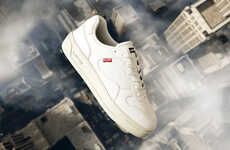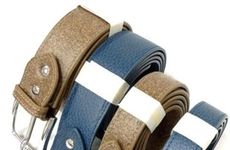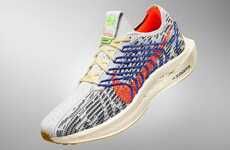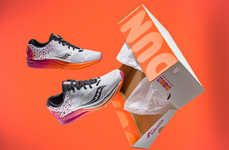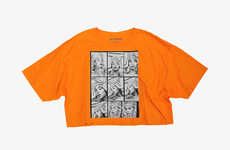
Nike's New Flyleather Material Transforms Traditional Leather
Mishal Omar — September 19, 2017 — Fashion
References: wired & businessoffashion
Nike's newly developed Flyleather has been a long time coming, and is now available a few years after the brands' other innovative material release in the form of the Flyknit.
The Flyleather material is modeled after the Flyknit, and offers a sustainable leather alternative that is made from combined "leather scraps and polyester blend fibers". Made from the leftover and normally unusable materials that most leather-makers discard, this innovative material is much more sustainable than traditional leather. The process of creating it includes grinding those materials into a fine dust, and then combining that dust with polyester fabric and water to make a paste, which is then bonded together to create Flyleather.
This sustainable leather material is a manifestation of Nike's goal to reduce its environmental impact, and reveals the brand's ongoing commitment to the cause of environmental protection.
The Flyleather material is modeled after the Flyknit, and offers a sustainable leather alternative that is made from combined "leather scraps and polyester blend fibers". Made from the leftover and normally unusable materials that most leather-makers discard, this innovative material is much more sustainable than traditional leather. The process of creating it includes grinding those materials into a fine dust, and then combining that dust with polyester fabric and water to make a paste, which is then bonded together to create Flyleather.
This sustainable leather material is a manifestation of Nike's goal to reduce its environmental impact, and reveals the brand's ongoing commitment to the cause of environmental protection.
Trend Themes
1. Sustainable Leather Alternatives - Nike's Flyleather material offers a sustainable alternative to traditional leather, using discarded scraps and polyester fibers.
2. Circular Economy in Fashion - Nike's Flyleather material demonstrates the potential for using waste materials to create new products, promoting a circular economy in the fashion industry.
3. Environmental Responsibility - Nike's development of Flyleather highlights the brand's commitment to reducing its environmental impact and promoting sustainable practices.
Industry Implications
1. Fashion and Apparel - The fashion and apparel industry can explore the use of sustainable leather alternatives like Flyleather to reduce their environmental footprint and meet consumer demand for eco-friendly products.
2. Sporting Goods - The sporting goods industry can incorporate Nike's Flyleather material into their products, offering customers a sustainable and innovative option for athletic gear and footwear.
3. Material Manufacturing - Companies in the material manufacturing industry can look to adopt a similar approach to Nike's Flyleather, using waste materials to create new and sustainable products.
5.2
Score
Popularity
Activity
Freshness














